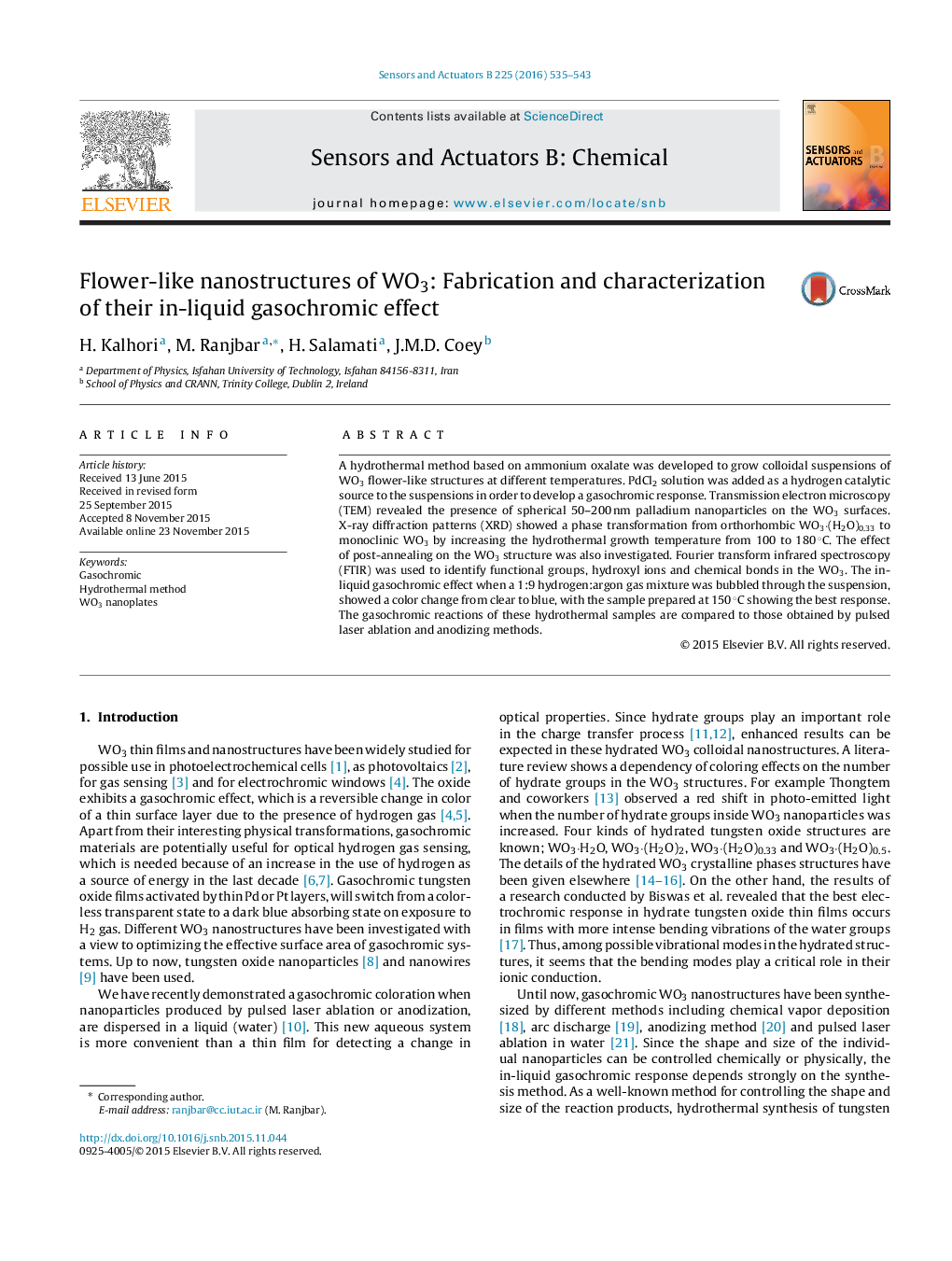| کد مقاله | کد نشریه | سال انتشار | مقاله انگلیسی | نسخه تمام متن |
|---|---|---|---|---|
| 744236 | 1644971 | 2016 | 9 صفحه PDF | دانلود رایگان |

• Report the gasochromic effect in hydrothermally synthesized structures for the first time.
• Description of the role of H2O molecules in the diffusion process of H atoms using FTIR results.
• Introduction of simple methods to enhance the gasochromic effect of WO3 nanoplates such as post-annealing process of samples and adding PdCl2 to activate the WO3 nanoplate's surface.
A hydrothermal method based on ammonium oxalate was developed to grow colloidal suspensions of WO3 flower-like structures at different temperatures. PdCl2 solution was added as a hydrogen catalytic source to the suspensions in order to develop a gasochromic response. Transmission electron microscopy (TEM) revealed the presence of spherical 50–200 nm palladium nanoparticles on the WO3 surfaces. X-ray diffraction patterns (XRD) showed a phase transformation from orthorhombic WO3·(H2O)0.33 to monoclinic WO3 by increasing the hydrothermal growth temperature from 100 to 180 °C. The effect of post-annealing on the WO3 structure was also investigated. Fourier transform infrared spectroscopy (FTIR) was used to identify functional groups, hydroxyl ions and chemical bonds in the WO3. The in-liquid gasochromic effect when a 1:9 hydrogen:argon gas mixture was bubbled through the suspension, showed a color change from clear to blue, with the sample prepared at 150 °C showing the best response. The gasochromic reactions of these hydrothermal samples are compared to those obtained by pulsed laser ablation and anodizing methods.
Journal: Sensors and Actuators B: Chemical - Volume 225, 31 March 2016, Pages 535–543